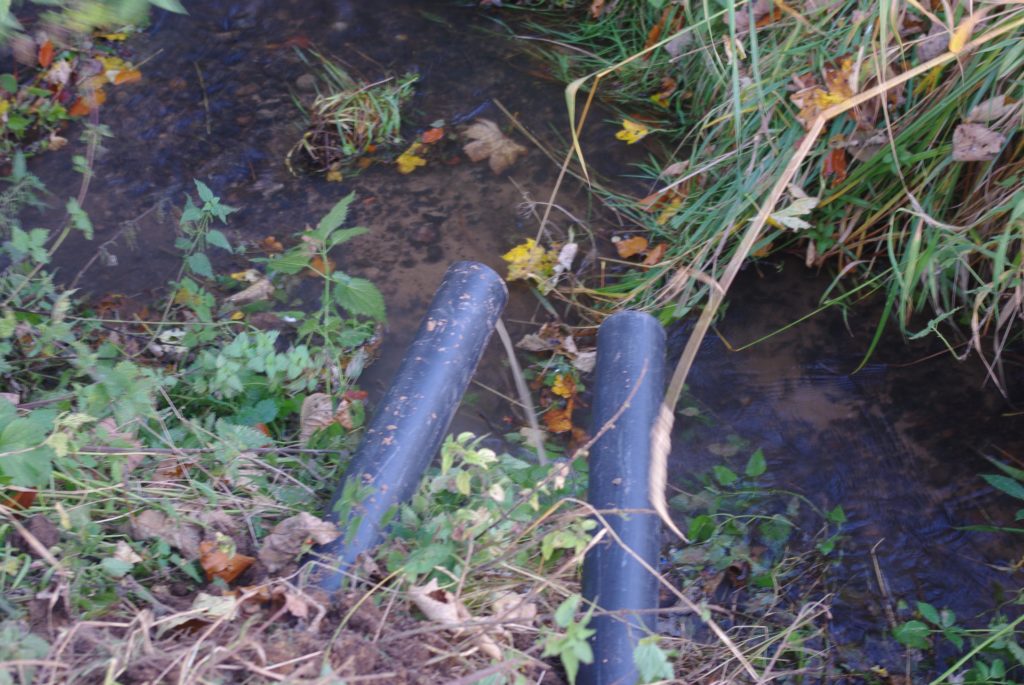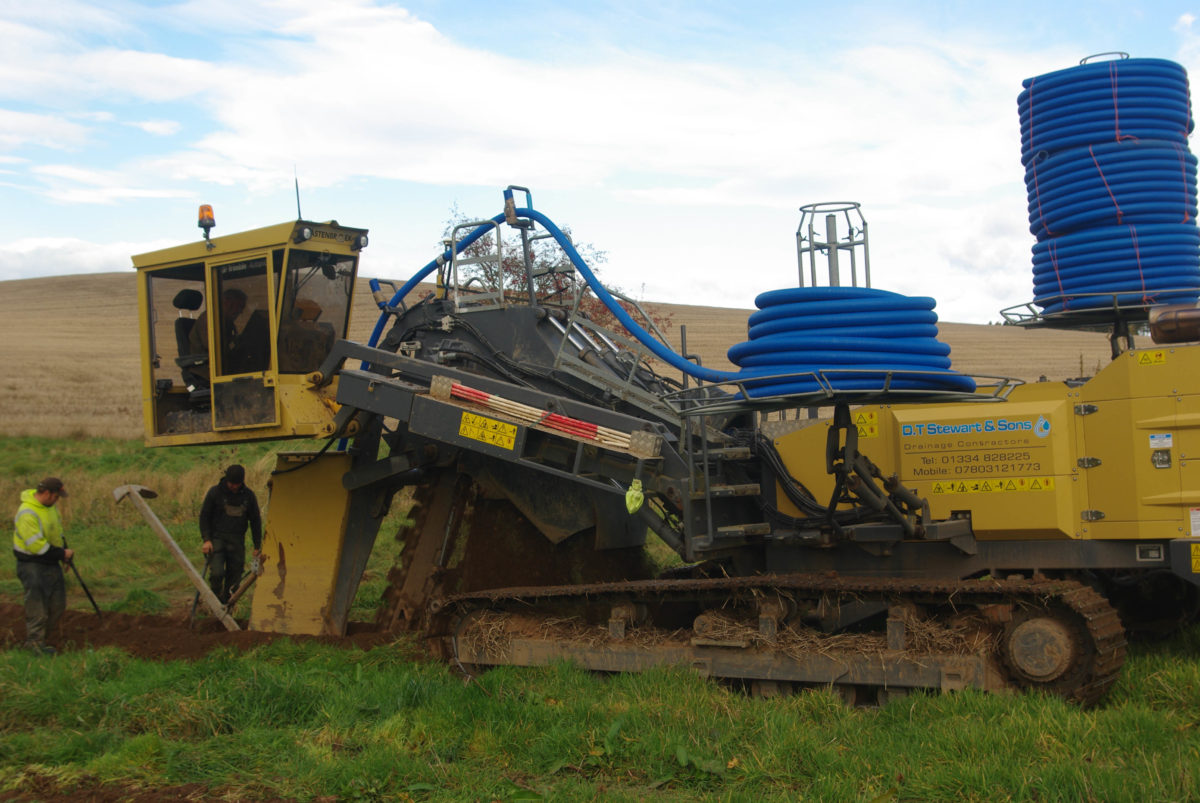It has been a while since I wrote here so it would be easy to think that having successfully got all our winter crops in the ground we’ve been sitting around with our feet up. The fact that I haven’t written anything means that we have been very busy. A former Grieve at Cults described the farm as “all stanes and water”. Dealing with the latter has taken up a lot of our time this autumn.
Winter Cropping
However, before all that, after harvest comes the sowing of our winter crops. The back end (autumn) weather was kind, so we were able to put as much winter barley as we had planned. We are also dipping our toe in the water with wheat this year. We grew wheat in the past, but left it out of our rotation 18 years ago, as we reckoned at the time that spring barley paid as well and was far less hassle. We are venturing back in to it for two reasons mainly, the first being that (especially this year) we were becoming too reliant on spring barley as our main crop, and secondly we were curious to see if we could make a better job of it than we did all those years ago.
Most of the ground for the winter barley was min tilled rather than ploughed (see here for an explanation). We were getting a bit pushed for time after the late finish to harvest and the ground conditions suited using min till this season. The results so far have been encouraging, though we have had a lot of spring barley volunteers coming through. A good sharp frost or two should correct that though.
| Crop | Area (hectares) |
|---|---|
| Winter Barley | 26.5 |
| Winter Oilseed Rape | 14.75 |
| Winter Wheat | 10.5 |
Drains & Ditches
Cults Farm sits on the side of a hill, so all the rainfall should run off to the bottom of the hill meaning we don’t need any drains, right? No, unfortunately not. The hill is riddled with limestone seams that ooze water out 24/7, and it is a continual job to keep drains and ditches cleared and working. The plan this autumn was to replace two drainage schemes that were no longer working, and to clear out some of the ditches on the farm. The picture below shows one field where we had a particular problem. This was taken in very early summer shortly after the crop had been sown. The field is just below the farm, and there is a burn (stream) running at the bottom of the photo.

The dark strip in the middle of the photo is where water is seeping out the side of the hill. The light colour above it is sand, which is bone dry, so the water is getting down so far, then hitting something impermeable and running out the side of the hill.
The area was drained over 40 years ago by my father, but the drains have blocked up so badly it is no longer worth clearing them. It is easier and more cost efficient to put in a whole new scheme.
Thankfully, these days this is all done by machine. We use a local drainage contractor DT Stewart and Sons, and they come in with their trenching machine (shown working in the feature photo at the top), which digs the trench, and lays the pipe. The trench is dug using a very fast moving chain. The digger follows along behind to fill in the trench.

The drains have been put in 6 metres apart, and run straight in to the burn. You can see in one of the photos the new drains already running water. This was only about an hour after it had been laid. The last photo shows the completed job. Hopefully we should have no more problems with this part of the field.


Pretty much all of Cults has been drained at some point, and these still need to be maintained every so often. A lot of these pipes are only 1” or 2” in diameter (they are known as ‘whistlers’), so keeping them clear isn’t easy. It is often easier to dig up a section of the pipe and replace it. The following picture shows a tile drain being dug up using a digger. We reckon this drain will have been laid around the time of the Crimean War (c1855), as prisoners of war were used for this sort of work. They didn’t have diggers in these days, so the work was done with squads using continually narrower spades until the trench was deep enough to put the tiles in. It is no surprise that some drains are very shallow, and go round large stones!

Ditches have been cleared too. This needs to be done on average once every 10 years or so, although there are some that could do with cleaning more often. Cleaning out ditches makes sure that drains will run properly, as outflows can get clogged up otherwise.
Winter Visitors
Because the straw was so short this year it was virtually impossible to get every single head of barley into the combine. A stroll over a stubble field after harvest revealed many heads lying on the ground. Because of this we have had a few visitors in cleaning up what was there. The first photo shows a flock of swans, and they were followed a week or so later by a flock of geese.


Merry Christmas and a Happy New Year
Finally, wishing you all the best for the festive season. We will be back in 2019 with more news and updates.

